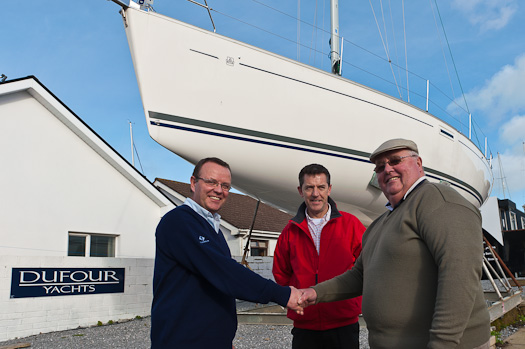Displaying items by tag: McClement
Crosshaven Boatyard Appointed Seaward Agents
Crosshaven Boatyard Co. Ltd have recently signed a 'Representation Agreement' with top of the range motor boat builders Seaward Marine of Cowes on the Isle of Wight.
The Cork yard will act as Seaward Marine Ltd's exclusive representative for the promotion and marketing of their range of pleasure craft in Ireland.
Seaward Marine Ltd have a modern facility in Cowes and they are world renowned for their comprehensive range of Nelson motor yachts. Over the past 25 years TT Boat Designs, the Nelson designers, have produced a range of safe all-weather sea keeping craft. The luxury fit-out provided the all-important niche and reputation for Seaward craft that has continued to date.
The current range consists of the Seaward 23, 25 and 29, the Seaward 35 Cockpit and Aft-deck versions and the magnificent Nelson 42. All craft are semi-custom fitted and are offered with a choice of propulsion to suit every need.
For further information please contact Hugh Mockler or Donal McClement at Crosshaven Boatyard Co. Ltd,
Hugh Mockler Joins Crosshaven Boatyard
Crosshaven Boatyard Company Ltd has announced that Hugh Mockler, (formerly of HM Yachts Ltd), is to join long established yacht broker, Donal McClement in the Boatyard's new boat and brokerage sales division.
Matt Foley, General Manager of Crosshaven Boatyard, told Afloat, 'Donal and Hugh are two of the best known and most successful Yacht Brokers in Ireland. Over the past number of years and their combined knowledge of a very difficult market will ensure that the buyers and sellers get a top class service'. Hugh and Donal will be able to give buyers and sellers the best possible advice.'
Crosshaven Boatyard has been providing marine services for over 60 years.
The boatyard also specialises in all aspects of the repair and maintenance of modern pleasure boats. Many well-known boats such as Gypsy Moth V, the Saint Brendan, Longbow II and a series of Moondusters were completed in the1980s.
It was the first commercial marina, with a marine travel hoist, in Ireland in 1979. The yard is the Irish distributor for Dufour Yachts of France, and Grand Soleil, of Italy.

Hugh Mockler (left) is greeted by General Manager Matt Foley (centre) and yacht broker Donal McClement. Photo: Bob Bateman

























































